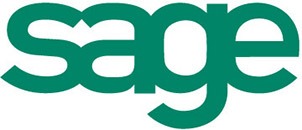New guidance designed to help organisations support employees experiencing menopause or menstruation and better enable them to retain experienced and talented people of all ages has been published by British Standards Institute (BSI).
BSI, the UK National Standards Body, has published the menstruation, menstrual health and menopause in the workplace standard (BS 30416), following consultation with experts and the public.
It sets out practical recommendations for workplace adjustments, as well as strategies to sit alongside existing well-being initiatives, to help organisations meet the needs of employees experiencing menopause or menstruation.
The guidance is designed to enable organisations to prioritize the needs of colleagues and to tackle the potential loss of skilled workers, who may be at their career peak. It follows Fawcett Society research suggesting an estimated 10% of women experiencing menopause have left the workforce due to their symptoms, which can range from hot flushes to dizziness, insomnia, muscle and joint stiffness, going up to 25% for those with more severe symptoms.
Global menopause productivity losses are estimated to already top $150 billion a year. BSI gathered a panel of experts to develop the standard, recognizing that this situation is set to grow as greater numbers of women stay in the workforce for longer. Estimates suggest that by 2025, there could be more than 1 billion people experiencing menopause globally – 12% of the world population.
BS 30416 has been developed to help organisations identify misconceptions around menstruation and peri/menopause and the impact a taboo surrounding them can have on workplace support.
The standard aims to provide examples of good practices for employers, including policy guidance, work design, workplace culture, and physical aspects of work. Steps to consider include:
- Considering the workplace culture to determine whether there is a general awareness of menstruation and menopause and whether employees are given opportunities for open conversations or to request support.
- Looking at whether line managers and HR managers are suitably trained or receive suitable resources to understand the potential impact of menstruation and menopause.
- Reviewing if the workplace environment is properly controlled and if there are facilities such as toilets or discrete changing rooms, or quiet recovery spaces that are easily accessible.
- Checking whether the relevant policies (well-being, D&I, performance management, sickness and absences, flexible working, etc.) consider menstruation and menopause.
- Looking at whether work designs enable some flexibility for an individual approach. Aspects could include scheduling, timings of breaks, comfort adjustments such as access to individual cooling or heating, and opportunities for sitting or stretching.
The guidance is designed to be flexible, acknowledging that experiences of menstruation and menopause vary significantly and not everyone will want support from their employers.
See: Menopause standard launched to help organizations support workers | BSI (bsigroup.com)









